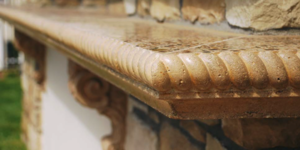 Admixtures are an important partof concrete mix design. They are those materials other than cement, water, and aggregate, and they are put into the mix
Admixtures are an important partof concrete mix design. They are those materials other than cement, water, and aggregate, and they are put into the mix
Admixtures are an important part of concrete mix design. They are those materials other than cement, water, and aggregate, and they are put into the mix just before or during the mixture to help it meet the design and finish needs of the installation. Says Gabriel Ojeda, president of Fritz-Pak, Dallas, admixtures can be used in two ways: to improve concrete’s ultimate durability and strength and to modify its behavior to make it easier to work with.
They can reduce the cost of concrete work, modify the qualities of the hardened concrete, and assure the quality of the concrete during the mix, transport, pour and set, while they help to modify setting times in response to weather or workability needs and make the concrete stronger and more durable.
According to the Portland Cement Association, Skokie, Illinois, the effectiveness of an admixture depends on the type and amount of cement used, water content, mixing time, slump, and the temperatures of concrete and air: Admixtures include the following broad categories:
- air entrainment chemicals that trap air in the mix, allowing it to withstand freeze-thaw cycles by giving water a place to go
- water reducers to increase the slump and enhance the concrete’s placeability without adding water and thus reducing the strength and permeability of the concrete
- accelerators and reducers to help modify set times and thus allow more time to do design work or keep the job on track with time constraints
- other admixtures, says the PCA, can be used to color the concrete, inhibit corrosion, reduce shrinkage, enhance workability, damp proof and bond the concrete
Air entrainment admixtures
According to Master Builders, a manufacturer of admixtures based in Cleveland, Ohio, concrete containing these admixtures, meant to safeguard concrete in exterior installations from the rigors of Northern climates, is more workable. However, adding too much air entrainment can reduce the compressive strength of the concrete. The bubbles in air-entrained concrete, says Ojeda, make it stronger and easier to trowel, as well as reducing bleed to produce a better finish.
Bob Harris of L.M. Scofield, Los Angeles, agrees. “You can’t do the finish work in excessive bell water, so air entrainment lets you get to it sooner and assures better quality,” he says.
However, according to Kevin Copeland, manager of technical services for the Southwest Region at Boral Material Technologies, San Antonio, Texas because air entrainment slows the rate of bleeding, it can cause delamination if the surface seals before the bleed out, so beware.
Air-entrainment additives can be used to save contractors money if they have a load that will be used for both interior and exterior installation. They can do the interior pour first and then add the air entrainment chemicals that will help the concrete stand up to weather for the exterior pour.
 Water-reducers
Water-reducers
These admixtures come in three strengths — normal range, mid range and high range, also known as superplasticizers — that improve workability and decrease the need for water in the mix by varying amounts, allowing for a stronger concrete without increasing the amount of cement, helping to save on costs. Adding water reducers, says Rick Seymour, technical services manager at Lafarge, Denver, Colorado, can help contractors get better detailing — he’s seen the engraving on a coin reproduced — and also save labor costs, as a four-man crew can do the work of six.
Lee Levig, of Levig Concrete is San Francisco, agrees that mid-range water reducers can give more “life” to the concrete — more detail time — while making concrete easier and less labor-intensive to place. They also make surfaces wetter, he says, so color hardeners can have a better effect.
The high-range water reducers, or superplasticizers, can produce highly flowable concrete while maintaining a specified water to concrete ratio, according to Master Builders, but their effect only lasts a short time. Fritz-Paks’ Ojeda adds that they do give the concrete more strength, by reducing the water to cement ratio, but that as it becomes denser, it may become harder to add color hardeners, as they need to absorb the water that just isn’t there. Another drawback, says Levig, is that too much of a plastic effect can result in shrinkage.
According to Boral’s Copeland, superplasticizers can be used to create self-compacting concrete, but that can cause aggregate to sink down and segregate out. To overcome this, he recommends use of viscosity modifying admixtures that will keep aggregates suspended throughout a mixture.
Superplasticizers can also lead to shrinkage if overused, and many contractors use fibers to assure that the concrete will stay put. However, warns Harris, polypropylene fibers are to be used only to overcome surface cracking; they will not give the bearing strength of rebar.
Accelerators
These admixtures make the concrete set faster and are often used during cold weather to overcome the slowdown in the hydration of the concrete that occurs when temperatures fall. They assure that concrete reaches its full strength before it is subjected to freezing. If fly ash or slag is used in the mix, an accelerator can help regulate the set of the concrete. Using accelerators can also help finish work begin earlier and keep an installation on schedule — and on budget, says Master Builders.
Tom Ralston, president of Ralston Concrete, Santa Cruz, California, agrees. “Use an accelerator to reduce wait time. If your crew is standing around waiting for a slab to go off on a cold day,” he says, “it costs a lot of money. Weigh that against the cost of using an accelerator.”
Ojeda adds that in addition to saving labor costs, accelerators are great to reduce cure times, so concrete can cure before a freeze is due. He also notes that they achieve faster strength, so driveways and runways are available for use by customers sooner.
One word of warning: Accelerators can contain calcium chloride, but Fritz-Pak’s Ojeda warns decor contractors to stay away from the calcium chloride ones. They can cause corrosion problems if exposed to water, react negatively with integral colors, and promote efflorescence, a drawback to aesthetics, he says.
Retarders
Retarders, as the name would imply, act just the opposite from accelerators. They slow down the set to allow for proper placement or to overcome the faster hydration that would be expected in warm weather, helping to assure quality. The PCA notes that the many problems contractors face in the field — trucks held up by traffic, onsite delays and equipment malfunctions — are other reasons to consider the use of retarders.
Retarders are used by decor contractors to give them more time to do stamping and finish work. Ralston says that his company is realizing the advantages of step retardation, using the prepackaged admixture on site when second loads come in. “The guys are like ants on a Sugar Daddy waiting around to do the work,” he says. “And you can use admixtures to get better control of local weather conditions — if your concrete is coming from 50 miles away, they may not know your local situation and you’ll have to adjust for it on site.”
Scofield’s Harris, who has worked on installations with Ralston, explains it this way: A third of the concrete can be poured, then a retardant added to the rest. After a second third is poured, more retardant is added to the remained. This allows time to do finish and detail work.
Costs
Ojeda adds that use of step retardants can also help contractors avoid short load charges. Indeed, the costs of admixtures must be considered when planning a project. When it comes to costing out a project, says Ojeda, the cost of the concrete represents 10%-20%, and the cost of the admixture is about 5%-10%% of that, so the total cost of admixtures represents only a small portion of the project. However, he says, this small investment can modify the concrete to meet the total needs of the project, saving time and labor and helping eliminate expensive callbacks and repair work. ”So don’t cut corners,” Ojeda says. “If it will help, use an admixture.”
Admixtures vary widely in cost, adds Seymour, but ultimately, the cost is immaterial, as the specifications of the job are paramount. When it comes to concrete, he says, “performance is key.”
Levig would agree. “When I use an admixture,” he says, “I do not think of how to cut costs but rather how to get a higher quality concrete.”
Getting the right product
“There is something we call putting the concrete to sleep, and admixtures can give you flexibility of set time so you can dictate what you need to do,” says Harris.
When it comes to knowing what to use and how to use it, suppliers are key. Lafarge’s Seymour notes that decor contractor should work with suppliers to get the right mix design for the job.
Most ready mix suppliers, Levig says, will have the right mix design for a particular job if the contractor gives them site — and temperature-specific information. On large jobs, suppliers will work on site with you, he says, but any contractor has to be ready to adjust for the local ambient temperature and other conditions. Levig advises contractors that “you must keep control of what you have. Each manufacturer will try to sell what he knows, and each one’s products reacts a little differently, so try out each one and learn by experience.”
Ojeda says that while ready mix suppliers determine what the contractor gets, each contractor should demand what he needs, so the more they learn about admixtures, and the more they know what to demand of their suppliers, the better they will do.
This is especially good advice considering that admixtures can also be added by contractors on site to meet specific needs of a pour. To this end, admixtures are packaged in preweighed portions that can be placed into the mix in the field, allowing for precise modification of the mix to meet site conditions without spillage.
Contractors would do well to keep a selection of these admixtures on hand to deal with on-site problems, making sure to conduct a field test before the pour to make sure the fix is on target and that the admixture does not change any aesthetic priorities.
Admixtures can come in combinations, says Harris, which gives more than one capability in one product. Further, admixtures can be used in combination, says Ojeda, but contractors should be wary about combining them. He warns that they are used in such concentration that each must be thoroughly dispersed before the next one is added to avoid problems.
Admixtures, if used right, can be the decor contractor’s best friend, allowing him to build in quality and strength while using his labor and time to the best advantage.















